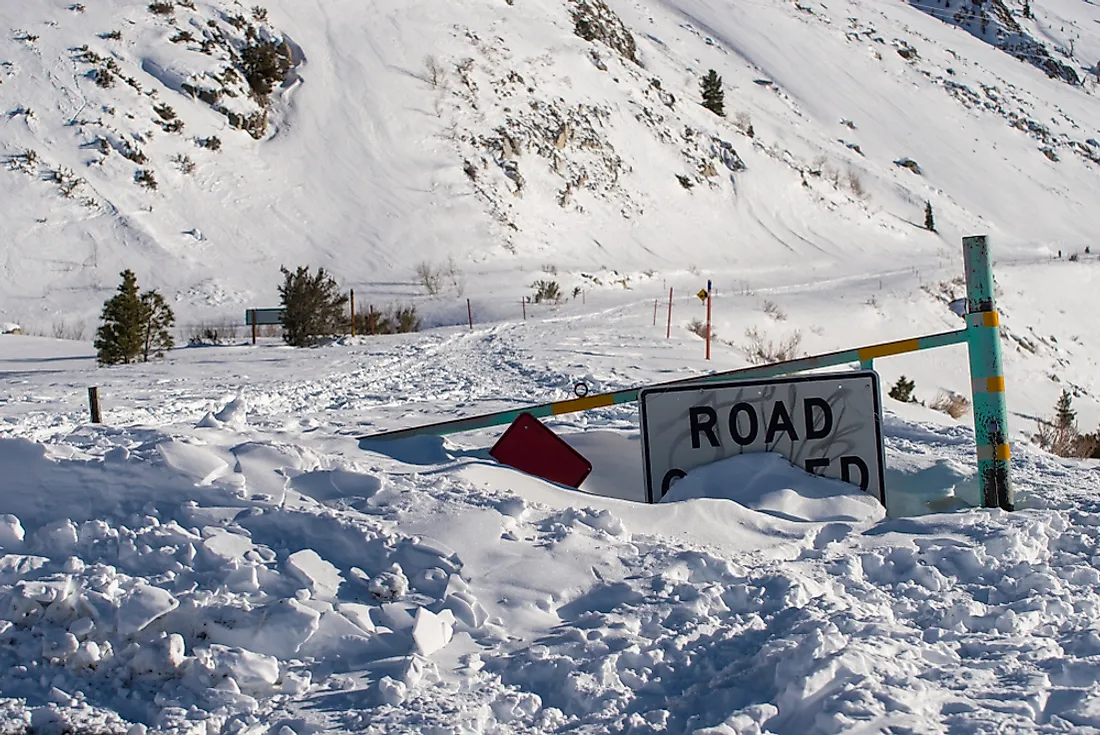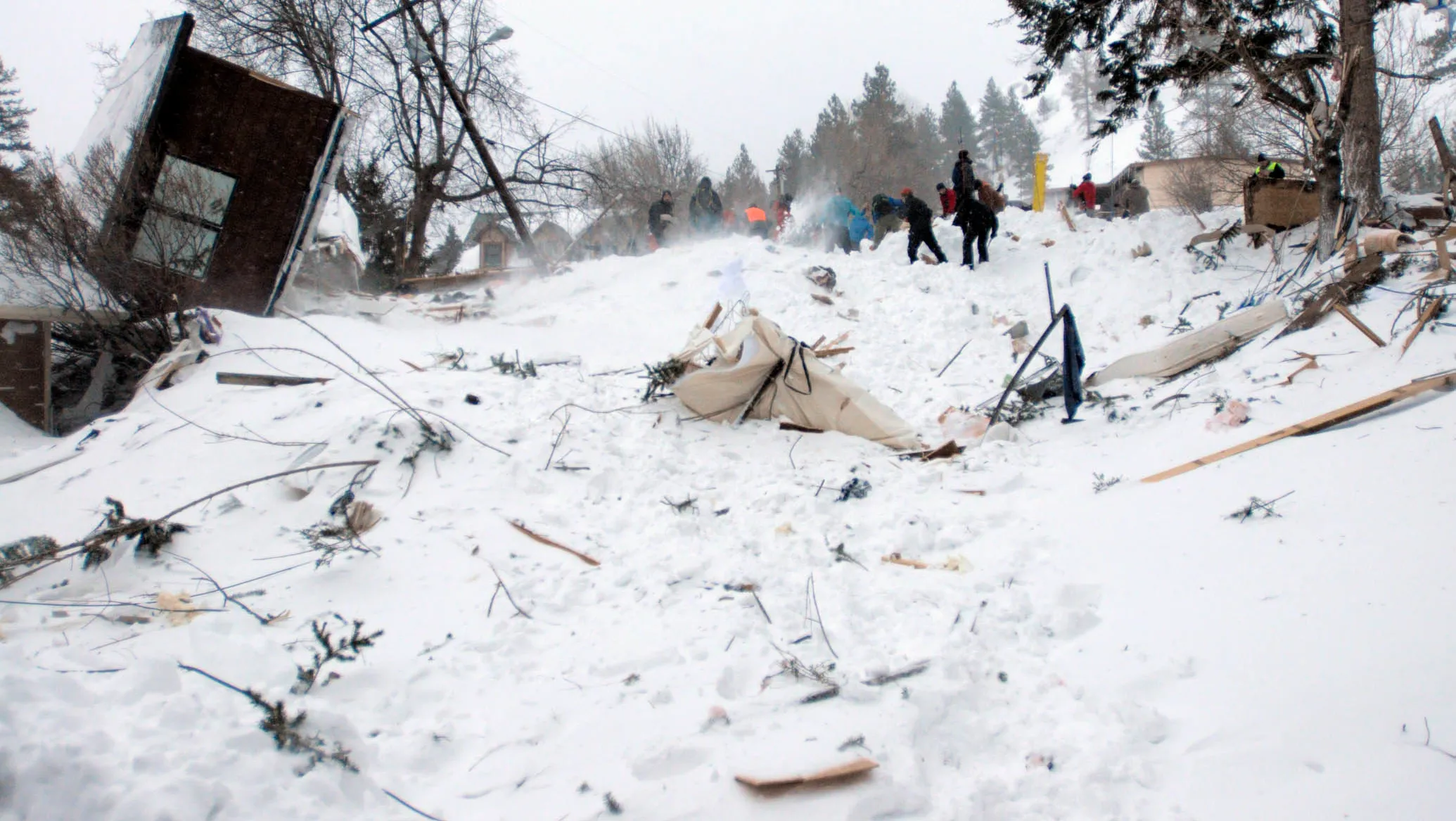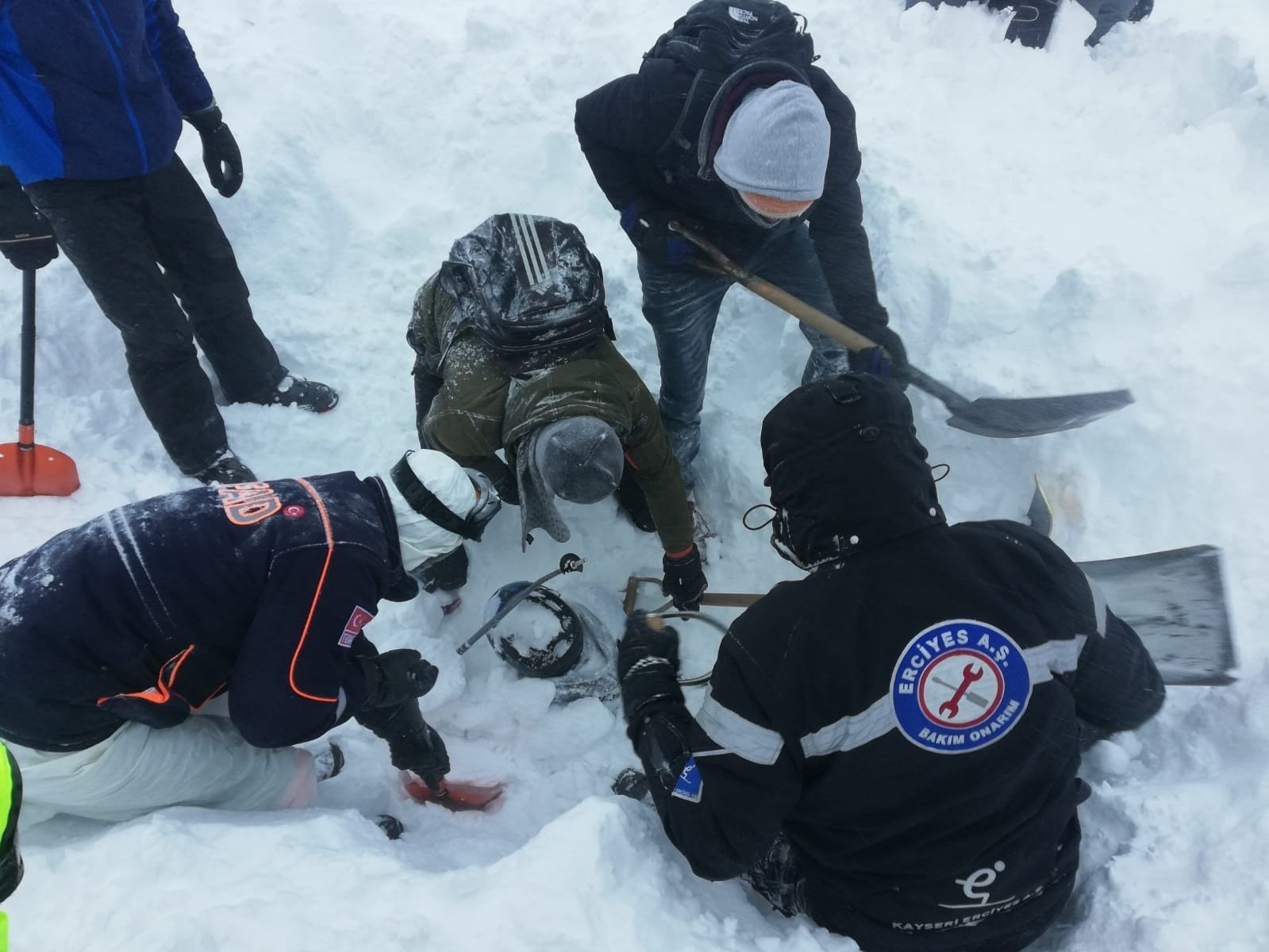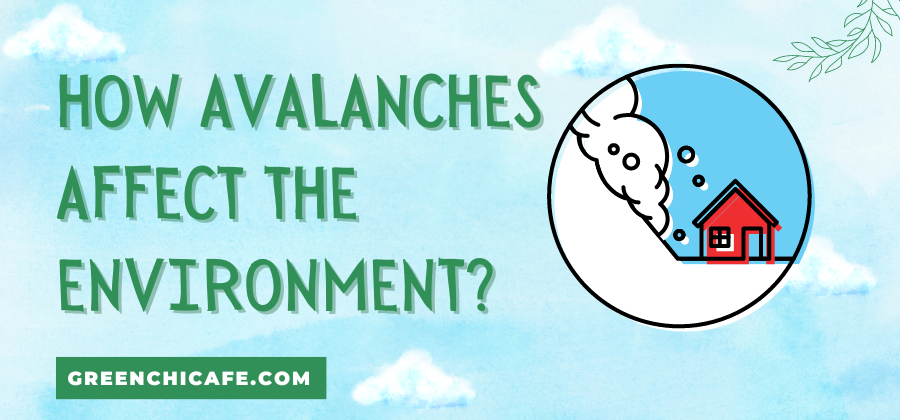Last Updated on June 3, 2024 by Annie Baldwin
Avalanches can have both destructive and beneficial impacts on the environment.
Their sheer force reshapes landscapes in an instant.
How Avalanches Affect the Environment

Avalanches can cause widespread destruction to forests, animals, and aquatic ecosystems.
They are capable of altering landscapes by moving tons of snow, uprooting trees, and killing plants and animals in their path.
Avalanches disrupt natural habitats and can block or divert rivers and streams.
Key Points
- Avalanches destroy trees and vegetation, damaging ecosystems.
- Avalanches cause animal mortality by injuring, killing or displacing wildlife.
- Avalanches can alter landscapes by moving debris and blocking waterways.
Our Opinion
In my expert opinion, avalanches are incredibly destructive natural forces capable of flattening forests, altering landscapes, disrupting ecosystems and killing plants and animals.
Their impacts can be widespread and long-lasting.
While avalanches play a role in natural ecosystems, human-triggered avalanches and climate change may be increasing their frequency and destruction.
We must better understand how avalanches affect environments in order to mitigate their damage.
Avalanche Environmental Impact

When an avalanche thunders down a mountainside, it flattens everything in its path. Trees splinter and snap, ecosystems are buried, and humans, plants and animals are killed. An avalanche can remove acres of trees in one go, leaving hillsides completely bare.
Avalanches cause significant animal mortality and affect aquatic systems. The winds produced by avalanches can damage buildings. With climate change, avalanche frequency and types may shift, impacting burial rates and survival.
Avalanches can totally destroy homes, cabins, and ski resorts. However, they also redistribute water and nutrients. This opens up new habitat and increases plant, insect, and animal diversity. Still, avalanches bring death and destruction. They kill people and animals while causing property damage, utility and transportation disruptions, flash floods, and more.
Effects of Avalanches
Avalanches can have devastating effects on both natural environments and human infrastructure. When avalanches roar down mountains, they uproot trees, shatter boulders, and scour the landscape. Tons of snow crashing downhill at high speeds can remove all traces of vegetation, leaving wide swaths of bare ground in their wake.
Aquatic ecosystems are impacted as avalanches dump debris and sediment into streams and lakes. Entire hillsides can be denuded— an effect similar to deforestation, destroying animal habitats and food sources. Avalanches directly kill wildlife unable to escape, from large animals to small burrowing rodents.
For people living in avalanche-prone areas, these events pose a major threat. Avalanches can destroy roads, railroads, and utility lines. Buildings directly in the avalanche path – homes, shops, ski resort facilities – can be crushed and demolished. Even if not hit directly, the powerful winds produced by avalanches can break windows and cause structural damage.
Beyond physical destruction, avalanches disrupt transportation networks and cut off access to affected communities. They make travel dangerous if not impossible. Utility disruptions knock out water, electricity, and communication services. Avalanche debris can dam rivers, causing upstream flooding when the dams eventually burst.
Though avalanches can be hugely destructive, they also play an important role in mountain ecosystems. The disturbances caused by avalanches help maintain diversity in plant and animal species.
By scouring hillsides and depositing debris, avalanches open up new habitats and redistribute essential nutrients and water. This helps diversify the landscape, allowing different species to gain footholds. Avalanches also build up deposits that create new habitat niches.
Areas impacted by avalanches go through cycles of regrowth and renewal. As vegetation recolonizes the disturbed areas, biodiversity increases. Avalanches shape mountain habitats in ways that support a wide range of species.
However, climate change may be altering avalanche frequency and extent. Changes to the timing, size, and locations of avalanches could disrupt their role in ecosystem dynamics. Species relying on avalanche disturbances could decline if events become too infrequent or severe.
Understanding these ecosystem impacts is key for conservation efforts. Protecting mountain biodiversity means protecting the natural avalanche regimes that help sustain it.
Positive Effects of Avalanches

While avalanches can certainly wreak havoc, they also provide some benefits to mountain ecosystems. Their periodic disturbances help maintain diversity and resilience.
As avalanches rush downhill, they break up dense forests and clear away excess brush. This opens up space for new plant growth and creates a mosaic of vegetation types. Areas buried by avalanche debris are eventually recolonized, enabling a wider range of species to inhabit the landscape.
Avalanches also replenish nutrients and deposit nutrient-rich soil. By transporting material from upper slopes to lower valleys, they enrich ecosystems at lower elevations. The deposits left behind create new microhabitats for plants and animals.
In addition, the melting snow from avalanches provides an influx of water. This boosts moisture levels in downstream areas during spring and summer. The added water benefits plants, aquatic ecosystems, and wildlife.
While too many avalanches can overwhelm ecosystems, periodic avalanching sustains diversity and fosters ecological resilience. By spurring renewal, avalanches enable mountain habitats to support a myriad of plant and animal species.
Negative Effects of Avalanches

Though avalanches can benefit mountain ecosystems, their destructive force also inflicts harm. The most obvious negative effects are the damage and loss of life they cause.
The rapidly moving snow can destroy trees, houses, roads, and anything else in its path. Buildings and infrastructure are severely damaged or demolished. Vehicles and equipment are crushed under the sheer weight.
Caught-off guard people and animals are killed or injured by the impact, suffocation, trauma and hypothermia. There is also increased animal mortality from habitat loss and food shortages.
Avalanches disrupt transportation, communication networks, and utility services. Blocked roads halt the movement of people, goods and equipment. Loss of power and water supplies cripples communities.
Productive land is smothered under meters of snow and debris. Crops and pastures are destroyed, resulting in agricultural losses. Avalanche debris can also dam streams, causing flash floods when the snow melts.
While avalanches shape mountain habitats, excessive avalanching overwhelms ecosystems. If too frequent, avalanches can prevent forests from regrowing and stabilizing slopes. This leaves landscapes vulnerable to erosion and landslides.
Though periodic avalanching provides benefits, uncontrolled avalanches inflict damage, disruptions and loss of life. Better forecasting, preparedness and prevention are needed to reduce their negative impacts.
FAQ
How Avalanches Affect the Environment?
Avalanches can cause death and injury to people and animals, damage infrastructure like buildings and roads, and alter the landscape by moving debris and vegetation.
What Harmful Effects Does an Avalanche Have?
Harmful effects of avalanches include loss of human life, destruction of property, damage to infrastructure, and disruption of transportation routes. Avalanches can also kill wildlife, destroy habitat, and contaminate water sources.
How Do Avalanches Affect Plants and Animals?
Avalanches can uproot, bury or break trees and shrubs. They disrupt and alter ecosystems, damaging plant life and displacing, injuring or killing animals. Avalanches can also block rivers, affecting freshwater ecosystems.
What Is the Cause and Effect of Avalanches?
The main causes of avalanches are heavy snowfall, wind deposition, temperature changes, and human activity like skiing. Effects include destruction of property, loss of life, altered landscapes and ecosystems, disrupted transportation, and flash flooding from snowmelt.
Conclusion
Avalanches can have devastating effects on the environment. They are capable of destroying forests, altering ecosystems, and disrupting waterways. Avalanches cause animal mortality and disrupt habitats. While avalanches can have some positive impacts like storing water in glaciers, their destructive power typically outweighs any benefits. Understanding how avalanches affect the environment is key to mitigating their damage.
